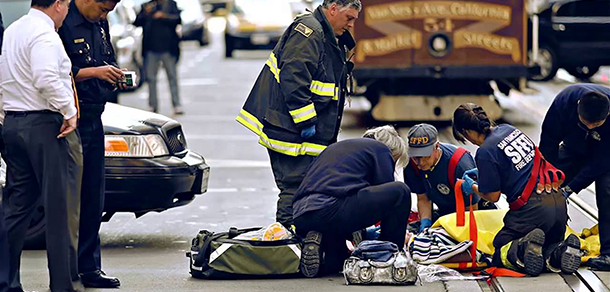Fresh Nok Nok capital promises to boost first responder authentication
17 July, 2017
category: Biometrics, Digital ID, Government
Fresh capital will help Nok Nok Labs develop and deploy first responder authentication technology that could make it easier for police officers, firefighters and medical personnel to check in to emergency sites without losing precious time.
Nok Nok Labs has raised $8 million in a Series D funding round led by Motorola Solutions Venture Capital and also involving all existing investors in the company, including DDS Inc., Onset Ventures, DCM Ventures, Lenovo Group, Korea Information Certificate Authority and Docomo Innovations. This new round of capital follows a $16.25 million round in August 2015. Nok Nok Labs, founded in 2011, helped to create the FIDO Alliance.
This push to boost first responder authentication technology comes amid a larger move to equip emergency workers with wearable technology that also includes biometrics
“This funding is strong validation of our commitment to provide modern authentication solutions to a variety of environments and verticals as we continue to execute on the FIDO vision of simpler, stronger authentication,” said Phillip Dunkelberger, CEO of Nok Nok Labs. “Motorola Solutions’ support will help us maximize the impact of our company’s solutions by protecting citizens, first responders and more. It is an exciting and critical new vertical to break into.”
Stronger First Responder Authentication
The new capital will go toward such projects as expanding the company’s channel infrastructure and speeding up the “the deployment of its strong authentication solution across the private and public markets including government, public safety and first responder agencies,” Nok Nok said.
First responder authentication technology stands as an especially important area, given the often “cumbersome methods” now used to make sure those people who show up at accidents and disasters are who they say they are, said Rajiv Dholakia, Nok Nok Labs vice president, products.
First responder authentication will be less likely to involve fingerprints –firefighters, paramedics and many police officers wear gloves to work, after all – than, say, facial recognition
When emergency workers arrive at a scene and secure a perimeter, using passwords or other relatively old methods for first responder authentication is a “very poor way to manage security,” Dholakia said. More efficient could be methods such as smart cards, or “tokens of some kind,” or even biometrics, he said. First responder authentication in the coming years will be less likely to involve fingerprints or hand scans—firefighters, paramedics and many police officers wear gloves to work, after all—than, say, facial recognition, he added.
This push to boost first responder authentication technology comes amid a larger move to equip emergency workers with wearable technology that also includes biometrics. Under the U.S. Department of Homeland Security’s Emerge Accelerator Program, for instance, startups in that space receive federal and private help to develop their products. Among the initiatives arising from the program is a technology that leverages biometrics and other data to keep track of health risk to firefighters as well as software that better connects first responders on the scene to improve situational awareness.



